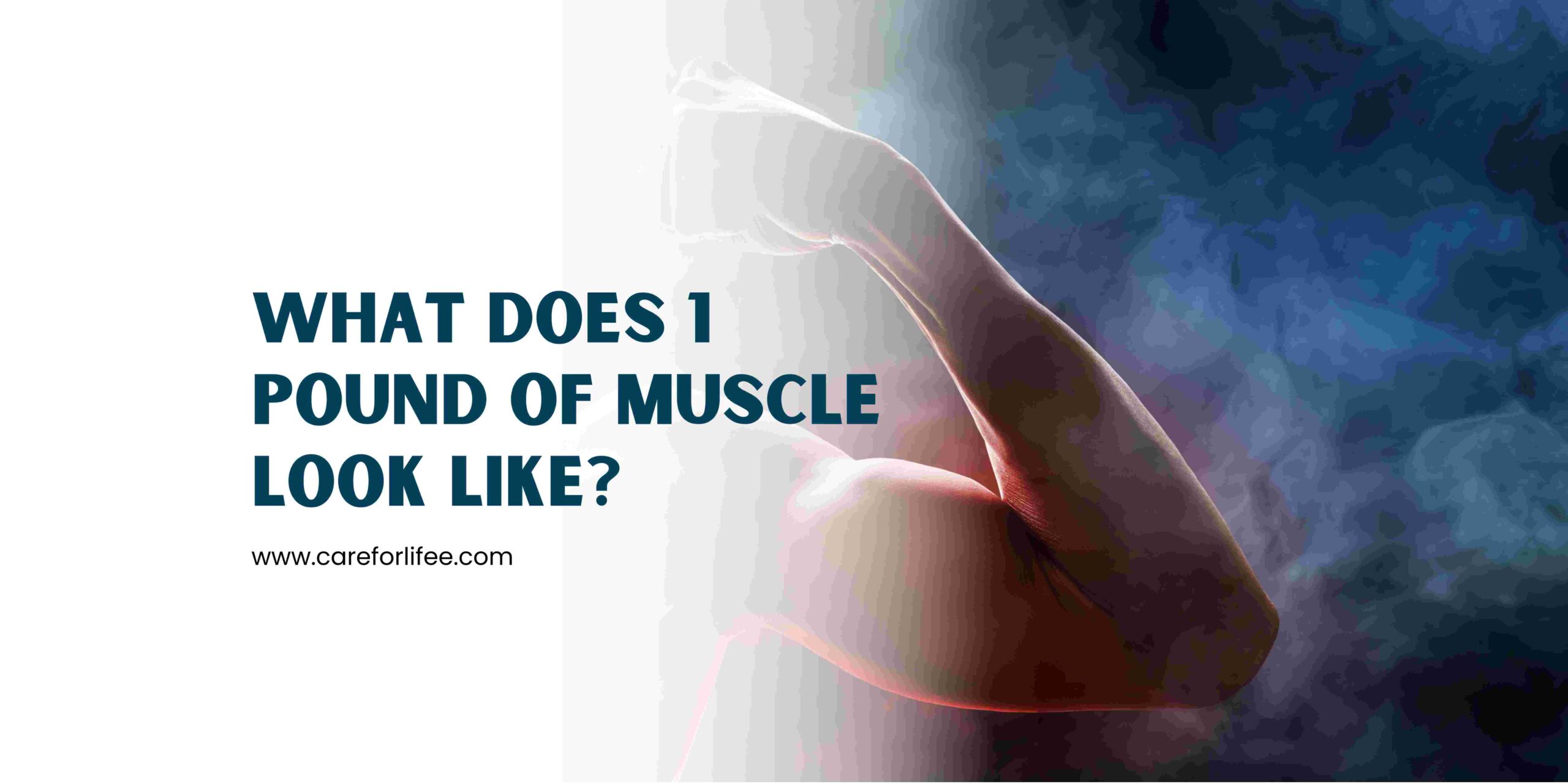What Does 1 Pound of Muscle Look Like?
One pound of muscle is roughly the size of a small fist.
Muscle is a crucial component of the human body, playing an essential role in movement, stability, and overall health. However, many people are unsure of what muscle looks like or how much of it they have.
This lack of understanding can lead to misconceptions about weight loss, fitness, and health. In this article, we will explore what 1 pound of muscle looks like and why understanding muscle mass is crucial for overall health and wellness.
What is Muscle?
Before we dive into what 1 pound of muscle looks like, it’s essential to understand what muscle is. Muscle is a type of tissue that is responsible for movement in the body. It is made up of thousands of tiny fibers that work together to generate force and movement.
There are three types of muscle in the body: skeletal, smooth, and cardiac. Skeletal muscle is the most familiar type and is responsible for movement and stability in the body. Smooth muscle is found in the walls of internal organs, and cardiac muscle is found in the heart.
Muscle vs. Fat
Muscle and fat are two very different types of tissue in the body, with vastly different functions and structures. While both can contribute to overall body weight, they differ significantly in their impact on health.
Muscle is much denser than fat, meaning it takes up less space for the same weight. One pound of muscle takes up approximately 20% less space than one pound of fat. This is why people with more muscle mass may appear leaner and more toned than those with higher levels of body fat, even if they weigh the same.
Muscle and fat are two very different types of tissue in the body, with vastly different functions and structures. Here is a comparison table of the differences between muscle and fat:
| Muscle | Fat | |
|---|---|---|
| Density | Dense and compact | Loose and fluffy |
| Function | Responsible for movement and stability | Stores energy and provides insulation |
| Appearance | Toned and lean | Soft and jiggly |
| Weight | Weighs more than fat | Weighs less than muscle |
| Health impact | Can increase metabolic rate and prevent chronic diseases | Can contribute to chronic diseases and negative health outcomes |
As you can see, muscle and fat have very different impacts on the body and overall health. While muscle may weigh more than fat, it is much denser and contributes to a leaner, more toned appearance.
Additionally, muscle plays a crucial role in metabolism and can help to prevent chronic diseases such as type 2 diabetes and cardiovascular disease. Fat, on the other hand, can contribute to negative health outcomes when present in excess.
How is Muscle Measured?
There are several ways to measure muscle mass, each with its advantages and limitations. The most common method is using a body composition scale, which estimates the amount of muscle in the body based on the electrical conductivity of different tissues.
Other methods include skinfold calipers, bioelectrical impedance analysis (BIA), and dual-energy x-ray absorptiometry (DXA). While these methods can provide more accurate measurements of muscle mass, they are also more expensive and time-consuming than a simple body composition scale.
Let’s say that Sarah is interested in tracking her muscle mass over time to monitor her fitness progress. She decides to use a body composition scale, which estimates the amount of muscle in the body based on the electrical conductivity of different tissues.
Sarah steps onto the scale and holds the handles, which send a small electrical current through her body. The scale measures the resistance to the current and uses an algorithm to estimate her body composition, including her muscle mass.
Sarah repeats this process every few weeks to track her muscle mass changes and adjust her fitness routine accordingly.
What Does 1 Pound of Muscle Look Like?
So, what does 1 pound of muscle look like? While it may be challenging to visualize, 1 pound of muscle is roughly the size of a small fist. It is compact and dense, taking up less space than 1 pound of fat.
For reference, 1 pound of muscle is also roughly equivalent to a block of butter or a baseball.

Why Does Muscle Matter?
Muscle mass plays a crucial role in overall health and wellness. Not only does it contribute to strength, stability, and mobility, but it also plays a role in metabolism and weight management.
Research has shown that having more muscle mass can increase metabolic rate, which can help with weight loss and weight management. Additionally, having more muscle mass can help to prevent chronic diseases such as type 2 diabetes, osteoporosis, and cardiovascular disease.
How to Build Muscle
Building muscle is not an easy task, and it requires a combination of exercise, nutrition, and rest. Resistance training is one of the most effective ways to build muscle mass, as it requires the muscles to work against an external force, such as weights or resistance bands.
Additionally, it’s important to consume enough protein to support muscle growth and repair and to get enough rest to allow the muscles to recover and rebuild.
Conclusion
Understanding muscle mass and what 1 pound of muscle looks like is crucial for overall health and wellness. Muscle is an essential component of the human body, contributing to movement, stability, and metabolism






